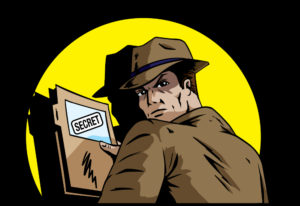Great employees are a wonderful gift, but individual heroics aren’t healthy for your business.
Someday, you will start thinking about leaving the business. Perhaps you already do. When you begin planning for your transition, what will your company systems sound like when you describe them to a critical buyer?
“Yes, we have a process for that. It hasn’t been updated, but Martha knows it like the back of her hand.”
“We really don’t have anyone cross-trained on that machine. Bucky likes to work alone, but it’s okay because he hasn’t taken a vacation in three years.”
“We always use Andy on that route. There are lots of traffic snarls, and he’s the only one who seems to be able to finish on schedule.”
You are getting the point. When an employee is especially productive or reliable, it’s easy to become dependent on his or her individual heroics. It’s one fewer function of the business that you have to watch.
 It is ironic that the very behaviors that make your life easier appear to be threats in the eyes of a prospective buyer. You know that they could pose a problem, but they haven’t so far. Why fiddle with what’s working?
It is ironic that the very behaviors that make your life easier appear to be threats in the eyes of a prospective buyer. You know that they could pose a problem, but they haven’t so far. Why fiddle with what’s working?
The answer is because individual heroics discount the value of your business. A buyer worries that key workers might not like his or her management style. As a new owner, he might be immediately approached for pay increases. Worst of all, if one of your heroes’ performance heads south, he may not be able to fix it, or even know what is happening.
For just a moment, look at your best employees as threats. Do you have a contingency plan for each? Can Martha’s process be documented so anyone can do it? Is Bucky just a loner, or is he trying to make himself irreplaceable? Can Andy’s mental map be duplicated by routing software?
And in case you didn’t realize it, “I can do any of those jobs myself. ” is the worst of all possible answers. Those kind of individual heroics will send the buyer towards the exit instead of you.
Dependable high performers are invaluable, but they are frequently protective of their status. Recognize them, but make it plain that that their work needs to be duplicable. (Although, “Of course, not at the level you perform.”)
If you don’t, start looking at them as liabilities rather than assets.
Do you know a business owner who would enjoy Awake at 2 o’clock? Please share!
 But the good customer keeps buying more. They are twenty times your size, and an increase of 2% for them translates into 40% more for you. Businesses in this situation aren’t necessarily complacent. They are just scrambling to keep up.
But the good customer keeps buying more. They are twenty times your size, and an increase of 2% for them translates into 40% more for you. Businesses in this situation aren’t necessarily complacent. They are just scrambling to keep up. For many, the business is a part of them. Shutting it down would be like having a piece of you die.
For many, the business is a part of them. Shutting it down would be like having a piece of you die. The M&A world abounds with horror stories of financial buyers who stripped the employee benefits from a company and drove off its key personnel. Others pulled their capital as soon as they had control (to leverage it in another deal) and left the business staggering under the debt replacing it. Still more inserted a Hired Gun executive from another industry whose inexperience quickly ran the business on the rocks.
The M&A world abounds with horror stories of financial buyers who stripped the employee benefits from a company and drove off its key personnel. Others pulled their capital as soon as they had control (to leverage it in another deal) and left the business staggering under the debt replacing it. Still more inserted a Hired Gun executive from another industry whose inexperience quickly ran the business on the rocks. First, there is the question of who is covered by the agreement. Most allow for advisors to each party to see the agreement. That can encompass accountants, attorneys, consultants, bankers and employees. I think employees present the greatest risk, since they are the most likely to personally benefit from information about customers, vendors and pricing.
First, there is the question of who is covered by the agreement. Most allow for advisors to each party to see the agreement. That can encompass accountants, attorneys, consultants, bankers and employees. I think employees present the greatest risk, since they are the most likely to personally benefit from information about customers, vendors and pricing.